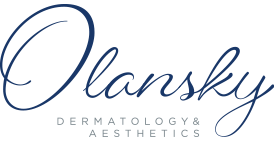When it comes to skin issues in men, shaving folliculitis is a common concern. You may understand this condition better using the term “razor bumps.” If you struggle with painful, itchy and unsightly bumps on your face after your shaving session, you can and should take action. There are ways to prevent shaving folliculitis as well as ways to treat it.
Razor bumps are essentially the result of inflammation called pseudofolliculitis. This occurs when the bearded hairs become ingrown and inflamed. The immune system sends cells to attack the ingrown hair in response to what is recognized as a “foreign body” in the skin. This causes acne-like lesions to form on the skin surface, called papules and pustules. Razor bumps are more common in men with curly hair than straight hair because of the tendency for a curly hair follicle to grow back towards the skin surface instead of straight out.
If left alone, razor bumps can lead to other unwanted skin conditions such as post-inflammatory hyperpigmentation, scarring, keloids, and infections. At Olansky Dermatology Associates, we offer effective ways to treat shaving folliculitis in men. You may need peels, creams, serums, or moisturizers to encourage cellular turnover in your facial skin. There are also prescription medications to treat this condition.
Going forward, you may have to change your shaving habits if you want to avoid razor bumps. While it may not be doable for everyone, shaving less often can help. At the very least, consider switching to an electric razor that doesn’t cut so close to the skin surface. Moisturize beforehand and avoid stretching your facial skin as you shave. Lastly, cut in the direction of your hair growth, not against it.
For more tips on avoiding shaving folliculitis or to get effective treatment for your razor bumps, call Olansky Dermatology Associates. We offer full service dermatology for men in the Atlanta area.


